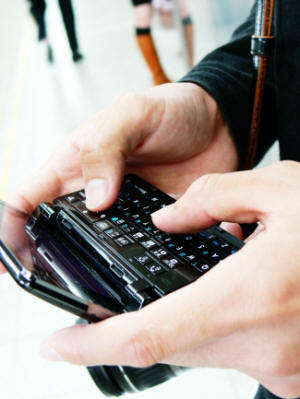Mobile Tech Use Is Rising, Monitoring Concerns Falling
Recent reports from AARP and Enterprise Forum Northwest indicate that those of us over the age of 50 enjoy mobile technology – especially cell phones and are willing to consider giving up some privacy using home monitoring equipment if it means staying in our home longer. Mobile technology includes cell phones, laptop or tablet computers, electronic readers, portable media players and global positioning systems. 
AARP’s report: Health and Caregiving Among the 50+: Ownership, Use and Interest in Mobile Technology(pdf) showed that a lot of people have great interest in using their mobile tech for managing their healthcare although few were actually doing it. But for those who care for other people a slightly different story. “One in five (20%) adults say they provide assistance to someone age 50+ with activities of daily living (ADLs) and three in ten (30%) say they provide assistance to someone age 50+ with instrumental activities of daily living (IADLs). Among people who provide assistance to someone age 50+ with ADLs or IADLs, about one in six (17%) say they currently use any mobile technology to help track the health of the person they help. Not surprisingly, among those who currently use any mobile technology to track the health of the person they help, the vast majority (89%) report using a cell phone or mobile phone to accomplish this task, and about one-third (34%) report they currently use a laptop or table computer to do the same.”
In Boomers, Technology & Health: Consumers Taking Charge!(pdf) Enterprise Forum Northwest reported that more that 56% of baby boomers were open to home healthcare monitoring devices. And the Sandwich Generation are interested as part of their caregiving to parents who want to stay in their own homes. The study also found that products must be well designed and relevant to their lifestyle needs or they wont be accepted. “Boomers want to shape the technology they use, unlike younger generations who allow their lives to be shaped by it,” says Michael Rogers of Practical Futurist.
The elephant that is still in the room for wide spread adoption of digital healthcare: health insurance companies’ reimbursement policies.



Great article — it’s encouraging to see studies like this and a big player like AARP getting involved with promoting aging and technology. AARP recently joined the Aging Technology Alliance: AGETEK, which is great news for our industry! The trouble is that our aging population mostly can agree that they want to stay at home and would use technology to do so. The sticking point is that there is a fuzzy line as to WHEN they need to use technology to enable independence. Many are still in a crisis mgmt mode and wait until there is an emergency to start looking into solutions.
We want individuals to look into technologies like GrandCare, BEFORE they need it. In other words, technologies like this can proactively help a person to stay home and perhaps give caregivers more information about how that person is doing. Perhaps even before they show outward symptoms, there could be some indication all is not right so a change can be made before crisis occurs!
Still – encouraging, we need to shift the thinking to technology being used to enable everyone (as I use it every day to wake up, remind me to take my vitamins, turn lights off after i leave home, etc).
Thanks! Laura from GrandCare Systems